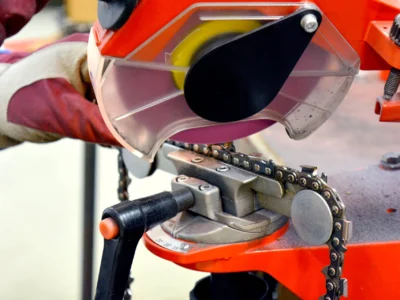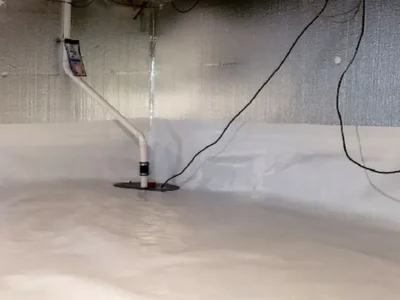The average consumer saves around 1% of a home’s value each year for maintenance and repair. A home valued at $400,000 would mean setting aside $4,000 each year for general wear and tear.
However, restorations quickly escalate when a home is not treated with the proper home repair tips. For example, a rotting porch post left to spread leads to over $4,000 in a full rebuild.
There goes your 1% in a flash.
You can guard your home and your bank account against disarray each year with do-it-yourself home repairs. This skillset saves you money, time spent dealing with professionals, and anxiety around a creaking house.
Keep reading below to find the eight home repair tips that you make you a smarter homeowner!
Painting Goes a Long Way
Home repair starts with one basic lesson: great maintenance tackles aesthetic and structural issues.
Painting a home is a high-value and simple way to freshen up your space and maintain long-lasting benefits. Fresh exterior and interior paint increases curb appeal and general cleanliness of your home. You’ll feel inspired in your space because of the new aesthetic energy you create.
Knowing how to paint is one of the basic home repair skills that will save you thousands over time. Professional paint services can be costly, yet this is a repair you can do with the right tools and time.
A great paint job starts with preparation:
- Remove furniture from a room or porch
- Cover immovable objects or plants
- Tape off moulding and ceilings
- Gather the needed tools like ladders, brushes, and drop clothes
Taking your time in prep mode makes painting interior and exterior walls a breeze. You can begin painting when you feel prepared and knowledgeable about what’s to come. Make gentle sweeping motions with a wet brush until you achieve full coverage.
Unsticking Windows With Ease
Sticky windows stop you from getting fresh air in your house and cooling down the space on hot days. Windows stick for several reasons, including dried paint, debris in the window frame, or an uncentered home foundation.
Sometimes replacement windows become necessary to avoid long-term damage, and it’s essential to understand the costs and value you’ll get in return. However, our home repair tips help unstick your window due to smaller issues.
Run a utility knife gently around the window frame to remove dried paint. Get rid of built-up debris. Use a pressure wash to unstick hard to remove particles. These methods create more breathing room for your window to open or close without obstruction.
Learn to Patch Drywall
Another one of the home repair tips that go far for aesthetic and structural support is drywall patching. This makes a great pair with painting to take your wall maintenance and appeal to the next level.
Drywall is a construction material used throughout your home. It’s inexpensive and durable but creates major bills when bringing in a professional service to patch problem areas.
Do it yourself home repairs include patching drywall areas to make a smooth stretch of wall or ceiling area.
Furniture scuffs, insecure nails, and accidental kicks are examples of how you can damage drywall in your home. When was the last time you hung a picture but then needed to redo the wall space?
You can repair this with putty, sandpaper, and primer/paint. Fill the hole with putty you can find at a home repair store. Sand down the area until smooth with the wall. Cover with a bit of primer and paint to blend the new drywall into the existing color.
Stop Mold and Mildew with Caulk
Does the area surrounding your windows or bathtub ever look unsightly and old? This is not only a bad look but an easy way your home builds up mold and mildew.
Caulking seals the gaps throughout your home, preventing drafts and water from coming indoors. Old caulking, however, has too many cracks to do its job well.
One of your basic home repair skills should be redoing caulking to protect your home from mold, mildew, and water damage.
Purchase a softening product from your local home store to make clearing out the old caulk easy. Clean the area after removal to prepare it for the new caulk. Cut your caulk gun on a diagonal, and make sure to puncture the top of the gun.
Place the tube into the area you want to refill and squeeze the gun while moving it along the crack. Try to stay as straight as possible, and don’t be afraid to practice on a piece of cardboard beforehand. Finally, use your finger to smooth over the fresh caulk and even the space out.
You can save hundreds from water damage by keeping this product fresh in your space.
Fix a Rotting Deck Easily
Another home repair tip to share with you is a DIY porch repair. Replacing a piece of rotting wood ASAP is the difference between a few dollars and thousands in full deck repair.
Remove the nails on the rotting board and remove using a cordless saw as needed. Inspect underneath the board to see if rot continues into the foundational structure. Reinforce the foundation with a clean piece of wood and secure with nails.
Finally, place a fresh deck piece on top of the new wood below and stain to your liking.
Deal With a Leaky or Clogged Toilet
You will need to deal with a leaky or clogged toilet several times in your homeownership. This is one of our home repair tips that you will use often.
Leaky toilets cause water damage and higher water bills. Clogged toilets cause discomfort and disuse.
Solve a clogged toilet with a plunger, plumbing snack, or even a bowl of water. The pressure each of these options creates in the plumbing is usually enough to dislodge objects. Home improvement stores offer other, stronger methods if the clog continues.
You can repair a running toilet with a new flapper and fill valve sold in DIY sets. These kits come with easy-to-use instructions that guide you through the process. Say so long to annoying sounds and wasted water.
Stop Faulty Pipes or Faucets
Pipes and faucets cause the same headaches in homes as toilet leaks do.
Bathrooms and kitchens are usually the most expensive repairs to make in a home because of the plumbing needed. Water can create thousands worth in repairs if not kept up within the home. Stopping faulty pipes and faucets is a needed home repair for dummies.
You can tighten a slip-nut in a pipe with a simple wrench or use a hole clamp to cover a hole or puncture area. More major damage may call for a professional, but we encourage you to identify the issue and find a DIY method if you’re able.
A leaky faucet is often the culprit of a faucet washer that needs replacing. First, find your faucet brand before going to the home repair store. Each brand sells replacement kits that come with the washer, O ring, and simple instructions.
This is one of the basic home repair skills you can learn by fixing your faucet next time it leaks.
Cleaning Gutters Is a Must
Cleaning gutters is a necessary DIY you should build into your home repair skillset. Full gutters cause water damage, mold, and dangerous rot when left to build up leaves and decay.
A simple clean every few months will cut the need to repair major damage down the line.
You only need a few key items to clean your gutters: a ladder, gloves, plastic scoop, and tarp. Remove the gunk in the gutters using the scoop and deposit on the tarp. Hose down the gutters once the debris is removed. Repair any sagging gutter or leaks with some simple purchases at the home store.
Cleaning your gutters even two or three times a year saves hundreds on landscaping and siding damage.
Home Repair Tips You Need to Know
The eight home repair tips above are meant to keep your home in new, working order year after year. Learning these skills and applying them in your house makes that 1% savings enough to replace the normal wear and tear.
Your home protects those in it, and you need to protect your space with these basic home repair skills. But it doesn’t stop here as there are hundreds of DIYs you can learn to keep your home in tip-top shape.










[…] preventing them from paying for expensive problems after the transaction has been finalized. Handling repairs pointed out by a home inspection does not need to be complicated. A shared understanding needs to […]